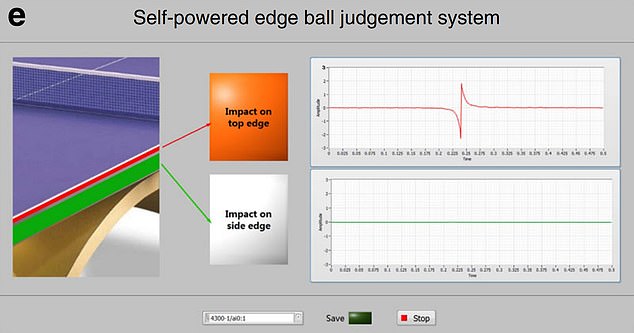We've all been there. You're playing a heated game of table tennis with your arch-rival. Then comes a crucial point that could swing the match one way or the other. You expertly maneuver your opponent to one side of the table, forcing a desperate, wide-angle return. The ball then makes some ambiguous contact with the table and you both celebrate. Your opponent says it clearly caught the top edge. Don't be ridiculous, you say, it clearly struck the side. You go back and forth, both looking for an objective observer to interrogate. If you are a professional player, you can appeal to an umpire. Most recreational players, however, lack a disinterested third party with a perfect angle to view the shot, so they are left to argue inconclusively. Many sports have turned to technology to resolve such momentum-killing kerfuffles. The American "big four" (i.e. baseball, basketball, football, and hockey) all use multiple camera angles to review certain plays. Tennis uses the "Cyclops" computer system to determine whether debatable shots are in or out, rendering John McEnroe-like tirades at the line judge moot. Now, thanks to a team of researchers at Georgia Tech, table tennis may finally have its own private Cyclops. Using a technology called triboelectric nanogenerators (TENGs), the team may have finally settled the age-old dispute once and for all. "Triboelectric" refers to the exchange of electrons when different materials come in contact, as with static electricity. The engineers designed a table tennis table with a thin layer of chemically treated balsa wood embedded below the surface. When struck by the ball, the material creates a triboelectric signal indicating exactly where contact was made, clearly delineating between top and side impacts. As an added bonus, it is a self-sustaining system. The kinetic energy from each impact powers nanogenerators, obviating eco-unfriendly batteries. While the playing characteristics of the high-tech tables have yet to be assessed by professional players, the system would certainly be a boon for officials tasked with high-level matches. Eventually, when the technology becomes cheaper to mass-produce, such "smart" tables may become fixtures of recreational clubs around the world. Then, at long last, you will finally have scientific proof that your opponent's shot hit the side. Unless, of course, the TENGs say it did in fact graze the top. Then, we would have to seriously rethink whether we want to compromise the purity of the game with such insidious intrusions.
More at Nature Communications
